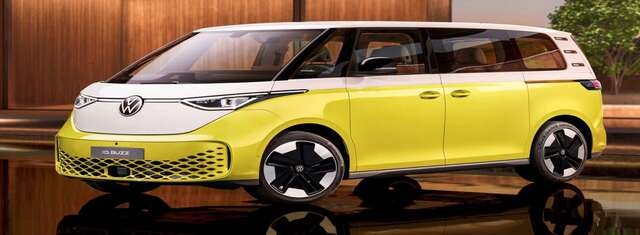Automobiles
Volkswagen Unveils New All-Electric Bus
The New ID Buzz

ID. Buzz (Source: Volkswagen)
USPA NEWS -
Volkswagen unveiled their new ID. Buzz in Hamburg this month, calling it “Europe’s first all-electric bus”.
From its iconic roots in the 1950s, the latest CO2 friendly version is affectionately known as a “Bulli”, resurrecting a popular German nickname for the 2011 VW Bus. “It’s the proportions that make the ID. Buzz so unique,” says Volkswagen chief designer Jozef Kaban. He made a direct link back to the original classic vehicle: “In the T1 you are practically sitting on top of the front axle. There’s no front overhang.” Even after the safety and technology features are loaded up front, the ID. Buzz has “super short overhangs,” says Kaban.
Five people have ample room for traveling and for their luggage. Like any van, the second row of seats can be folded down, doubling the storage capacity. “In the 1950s, the Volkswagen Bulli stood for a new feeling of automotive freedom, independence and great emotion,” said Ralf Brandstätter, Chairman of the Board of Management. “The ID. Buzz picks up on this lifestyle and transfers it into our time: emission-free, sustainable, fully networked.”
The model line is being produced at Volkswagen’s main plant in Hanover Germany. The majority of the electric drive system modules will also be made in Germany “to the highest quality standards,” according to the media release, and the vehicles will exit the production line as “zero-emission vehicles.” The company says the vehicle’s manufacture and shipping has a carbon-neutral footprint, and the entire interior uses recycled synthetic materials, free of leather.
Available across Europe this Fall (with orders starting in May), the Buzz will come with:
• A 77 kWh lithium ion battery (gross energy content: 82 kWh) that provides current to a 150 kW electric motor, which drives the rear axle.
• ‘Plug & Charge’ technology enables the ID. Buzz to be easily charged while out and about with up to 170 kW
• Bidirectional charging enables the ID. Buzz to feed unneeded energy from the battery into the customer’s home power network (Vehicle-to-Home)
• A 77 kWh lithium ion battery (gross energy content: 82 kWh) that provides current to a 150 kW electric motor, which drives the rear axle.
• ‘Plug & Charge’ technology enables the ID. Buzz to be easily charged while out and about with up to 170 kW
• Bidirectional charging enables the ID. Buzz to feed unneeded energy from the battery into the customer’s home power network (Vehicle-to-Home)
“The position of the battery, integrated deep down in the sandwich floor, and the lightweight electric drive system result in a good distribution of weight and a low vehicle center of gravity. Both factors optimize the handling and agility,” said the release.
They say it also has an “unusually small” turning circle of 11.1 meters.
Expect a starting price of around $40,000.
The line also offers a larger cargo van, with double the storage space, called the ID. Buzz Cargo.
They say it also has an “unusually small” turning circle of 11.1 meters.
Expect a starting price of around $40,000.
The line also offers a larger cargo van, with double the storage space, called the ID. Buzz Cargo.
Thank you for reading my article. These are merely my thoughts and insights based on the facts. I use only verified sources. No fake news here. I write about a variety of subjects, mainly things I want to research and know more about. You can check out my website – Small Village Life at smallvillagelife.com, where I share useful articles and news.
Wendy writes for the United States Press Agency and is a former columnist with the Fulton County Expositor, Wauseon, Ohio.
Source: Volkswagen
Wendy writes for the United States Press Agency and is a former columnist with the Fulton County Expositor, Wauseon, Ohio.
Source: Volkswagen
more information: https://smallvillagelife.com
Liability for this article lies with the author, who also holds the copyright. Editorial content from USPA may be quoted on other websites as long as the quote comprises no more than 5% of the entire text, is marked as such and the source is named (via hyperlink).





